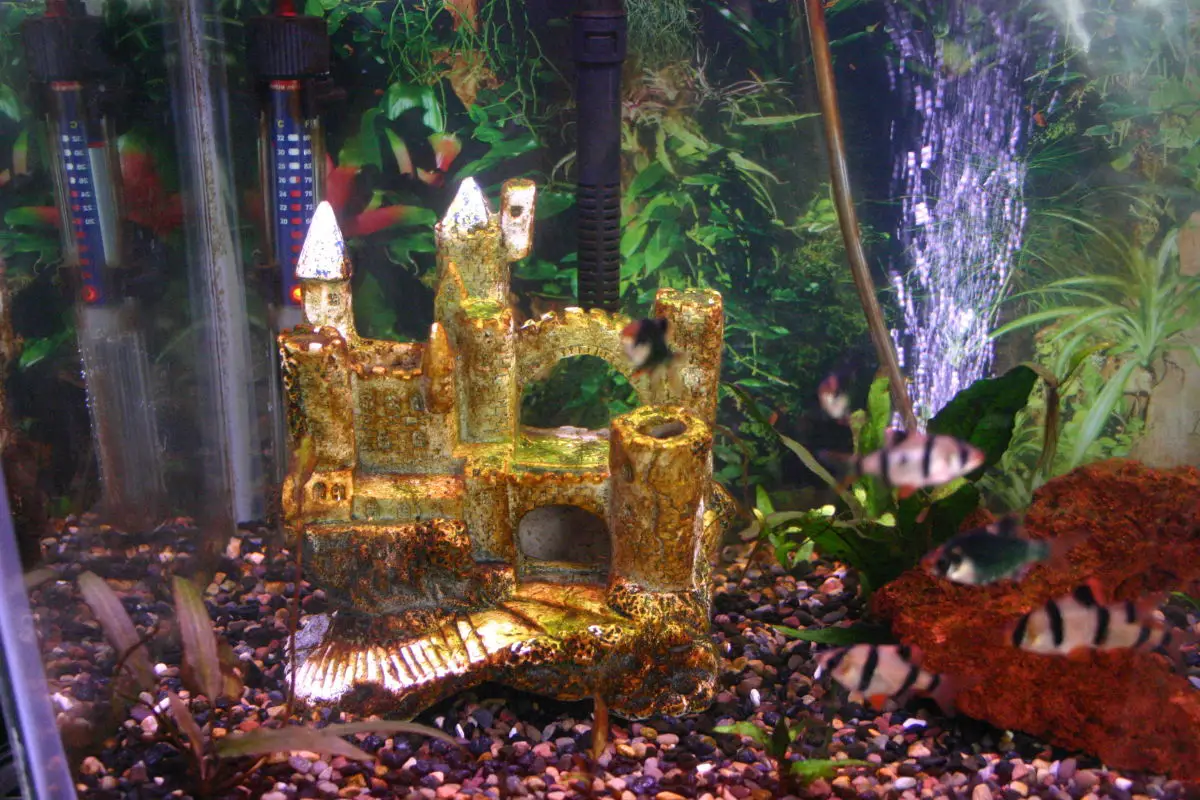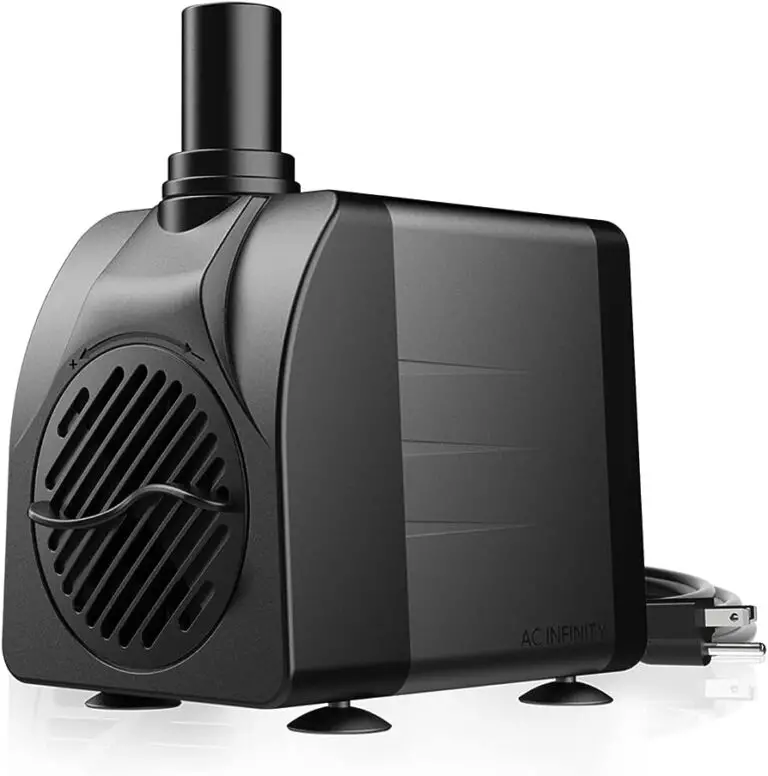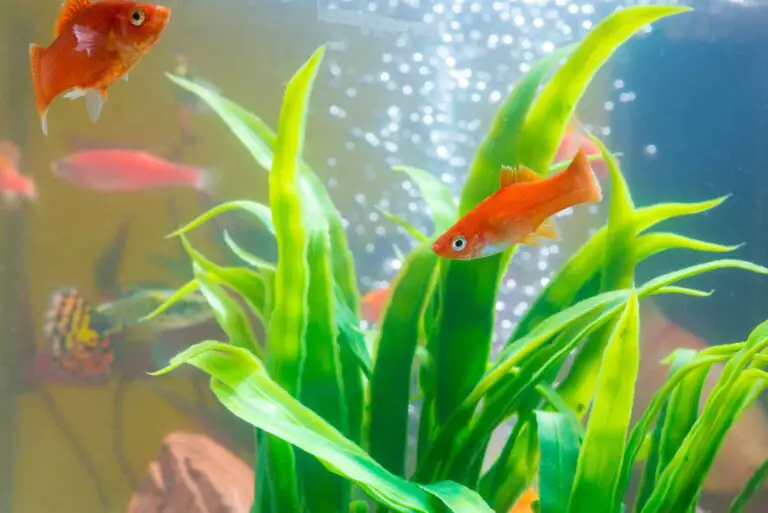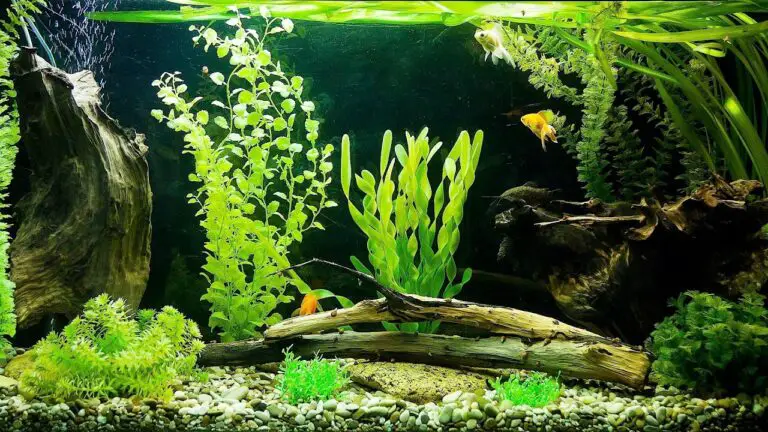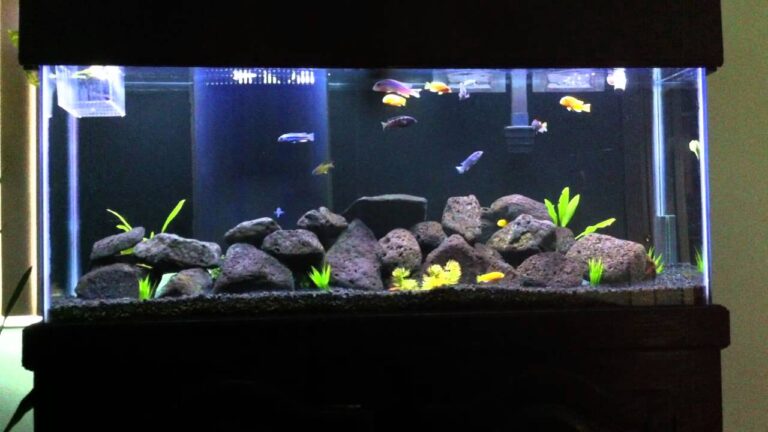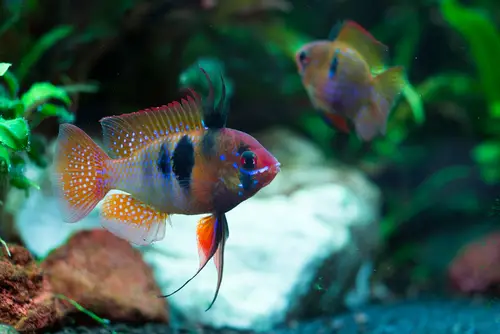How to Get Rid of Diatoms in Freshwater Aquarium?
To get rid of diatoms in a freshwater aquarium, perform regular water changes and gravel vacuums. Remove any excess organic matter from the tank which can cause nutrient levels to rise and encourage diatom growth. Keep nitrate levels low by using an effective filtration system and doing frequent water changes.
Increase circulation in the tank with additional powerheads or wavemakers to help keep nutrients from settling on surfaces where they can be consumed by diatoms. Use chemical treatments that contain silicate binders, such as Phosguard, to reduce silicates in the water column that feed diatoms. Treating with UV light may also help control their spread if used consistently over time.
Last but not least, provide plenty of live plants for your aquarium which will act as natural filters for nutrients and toxins including diatoms .
- Clean the Tank: Start by thoroughly cleaning the tank and all of its accessories, including decorations, rocks, and substrate
- Use a gravel vacuum to remove any dirt or debris from the bottom of the tank
- Rinse off any items that can be removed before putting them back into your aquarium
- Increase Water Flow: Diatoms prefer still water because it allows them to remain in place while they grow and spread their colonies
- To prevent this, increase water flow within your aquarium by adding a powerhead or wavemaker pump to create movement throughout your tank and discourage diatoms from settling on surfaces
- Reduce Phosphates: Diatoms need phosphates as an energy source so reducing phosphate levels in your aquarium will help reduce diatom growth and propagation significantly over time
- Test for phosphate levels using an appropriate test kit then add chemical filtration media such as poly-filter pads or granular ferric oxide (GFO) to absorb excess phosphate from the water column if needed
- 4 Change Lighting Cycle :Algae love bright lighting which encourages rapid growth – particularly when combined with high nutrient levels in the water column
- To reduce diatom growth , consider changing up your lighting cycle if necessary; keep lights on for only 8-10 hours at most each day instead of leaving them on continuously throughout 24 hours
How to Get Rid of Diatoms in Planted Tank
The presence of diatoms in a planted tank is often an indication that your water parameters are out of balance. To get rid of them, it’s important to first determine the underlying cause and then address it with proper maintenance. This may include water changes, increasing aeration, reducing light intensity, or adjusting fertilization levels.
Additionally, adding fish species known for eating diatoms can help control their population. With diligent attention to these steps and regular monitoring of nitrate and phosphate levels, your planted tank should be free from diatoms in no time!
What Eats Diatoms in Freshwater Aquarium
In freshwater aquariums, diatoms are usually consumed by scavenger fish like plecos and loaches. These fish act as natural algae control and help keep the tank clean. In addition to this, some species of snails may also feed on diatoms in the aquarium – such as Malaysian Trumpet Snails or Nerite Snails.
What Eats Brown Algae in Fish Tank
Brown algae, also known as diatoms, are a common sight in fish tanks and are often considered to be a nuisance. However, there is no need to worry – brown algae can actually be beneficial for the tank’s ecosystem. A number of different animals will feed on brown algae in your aquarium such as snails, shrimp and various species of fish like plecostomus or otocinclus catfish.
These animals not only help keep your tank clean but they also provide an additional source of nutrition which helps promote healthier growth among fish and other aquatic life.
What Causes Brown Algae in Fish Tank
Brown algae, also known as diatoms, are a type of single-celled organism that proliferate in fish tanks with high nitrate levels. They thrive in environments where there is a lot of light and the water has higher than normal levels of phosphates or silicates. Brown algae can be caused by inadequate filtration, overfeeding or leaving the tank lights on too long.
To prevent its growth it’s important to keep nitrates and phosphates low through regular partial water changes and regular maintenance such as cleaning your filter media.
Hydrogen Peroxide in Fish Tank Brown Algae
Hydrogen peroxide can be used to fight brown algae in fish tanks. It is an effective way to kill the algae and restore clarity of the water, however it should not be used as a long-term solution. Hydrogen peroxide should only be added in small amounts, with caution, as too much can harm your fish or other aquarium inhabitants.
If left untreated, brown algae can cause oxygen deprivation and lead to the death of your aquarium’s ecosystem.
Diatoms in Aquarium
Diatoms are one of the most important components of a healthy aquarium. These single-celled algae play an essential role in nutrient cycling and provide food for other organisms living in the tank. Diatoms can be found naturally occurring in both freshwater and saltwater systems, but they prefer environments with ample amounts of sunlight and nutrients like nitrates.
As long as these conditions are met, diatoms will thrive and add to your aquarium’s overall health.
Diatoms Freshwater Aquarium
Diatoms are a type of algae that can be found in freshwater aquariums, and they provide many benefits to the ecosystem. They act as an important food source for fish, help keep tank water clean by consuming nitrates, and add vibrant colors to your aquarium with their unique golden hue. Diatoms also produce oxygen which helps keep the water healthy and balanced for other inhabitants such as plants.
As long as diatom populations remain under control through regular maintenance practices like changing out a portion of the tank’s water every few weeks, they can play an essential role in maintaining a healthy ecosystem within your aquarium.
How to Get Rid of Brown Algae on Plants
Brown algae, also known as diatoms, can be an unsightly sight on your houseplants. Luckily, there are a few simple steps you can take to get rid of it and keep it from coming back. First, trim off any infected leaves and discard them in the trash.
Next, spray the plant with a mixture of one part hydrogen peroxide to four parts water. Let this sit for 10-15 minutes before rinsing thoroughly with cool water. Finally, ensure that your plants have adequate light and ventilation so that they don’t become too humid or stay moist for long periods of time which will prevent new algae growth in the future!

Credit: buceplant.com
How Do You Get Rid of Diatoms Fast?
Getting rid of diatoms quickly and effectively can be a tricky task, but with some patience and the right products it can be done. One of the best ways to get rid of diatoms is to vacuum them out using a powerful filter system that can capture these tiny organisms. This should be done on an ongoing basis in order to keep the diatom population down, as they reproduce rapidly in an aquarium environment.
Additionally, you may also want to use chemical treatments such as copper sulfate or hydrogen peroxide to help kill off any remaining diatoms after vacuuming has been completed. Finally, make sure your water parameters are balanced correctly by testing for ammonia, nitrite, pH levels and other factors regularly; this will ensure that there isn’t any excess nutrients present which could encourage their growth. With proper maintenance and regular cleaning cycles, you should have no problem keeping this pesky pest at bay!
How Do I Reduce Diatoms in My Tank?
If you’re looking for ways to reduce diatoms in your tank, the most important factor is to ensure that your aquarium’s water quality and chemistry are properly balanced. The first step would be to test your water parameters such as ammonia, nitrite, nitrate, pH and alkalinity levels with a reliable testing kit. Once you have determined what these values are it will give you an indication of whether or not adjustments need to be made.
If so then make sure all necessary changes are done gradually over time as sudden changes can cause further stress on both fish and plants alike leading to more potential problems down the road.It is also essential that regular maintenance tasks such as partial water changes (about 25%) once a week should be carried out using high-quality dechlorinated tap water if possible, this helps keep nutrients like phosphates at bay which can contribute to diatom growth. Additionally, try adding some activated carbon into the filter media which will help remove any organic pollutants that could potentially fuel algal blooms in addition to helping maintain crystal clear Aquarium water overall by removing toxins from medications or other chemical treatments used during aquascaping processes.
Finally, use a UV sterilizer if needed – this device kills off harmful microorganisms including microscopic algae like diatoms before they have even had chance take root in the substrate!
What Causes Diatoms in Aquarium?
Diatoms are a type of algae that many aquarium owners will encounter. They appear as a brownish film on the glass, rocks, and other surfaces of an aquarium and can quickly take over if not managed properly. Diatoms are caused by several factors, including excess light and nutrients in the water.
Too much light allows them to photosynthesize rapidly, while too many nitrates or phosphates provide extra food for their growth. In addition to these environmental causes, diatoms can also be introduced via live plants which carry spores from another tank or store tank when they are added to your own system. Another way diatoms occur is through filtration media such as sponges that have been used in other tanks before being placed in yours; this introduces foreign particles into your tank environment which then become hosts for diatom growth.
Lastly, even introducing new fish can cause a spike in diatom growth as they bring with them waste matter that acts as nutrients for these organisms’ proliferation!
What Eats Brown Diatom Algae Freshwater?
Brown diatom algae are a type of aquatic plant that live in fresh water. They are an important part of many freshwater ecosystems and provide food for a variety of organisms, such as fish, shrimp, snails, and other invertebrates. These animals feed on the algae either directly or indirectly by consuming smaller creatures like zooplankton which graze on them.
Fish such as carp, bass, trout and catfish will also eat the brown diatoms when they have access to them. Other aquatic grazers include some species of turtles and even ducks who can reach into shallow waters with their bills to pick at the algae. All these creatures rely on brown diatomic algae as a source of nutrition so it’s important to keep these plants healthy if we want our wildlife populations to thrive!
How To Get Rid of Brown Algae / Diatoms In Freshwater Aquariums
Conclusion
In conclusion, diatoms are a common problem for freshwater aquariums and can be difficult to get rid of. However, by following the steps outlined in this article—including regular water changes, increasing filtration and circulation, reducing lighting times, and adding chemical treatments such as algaecides or phosphate removers—it is possible to reduce or eliminate diatom growth in your aquarium. With patience and persistence you can keep your tank looking clean and healthy!
